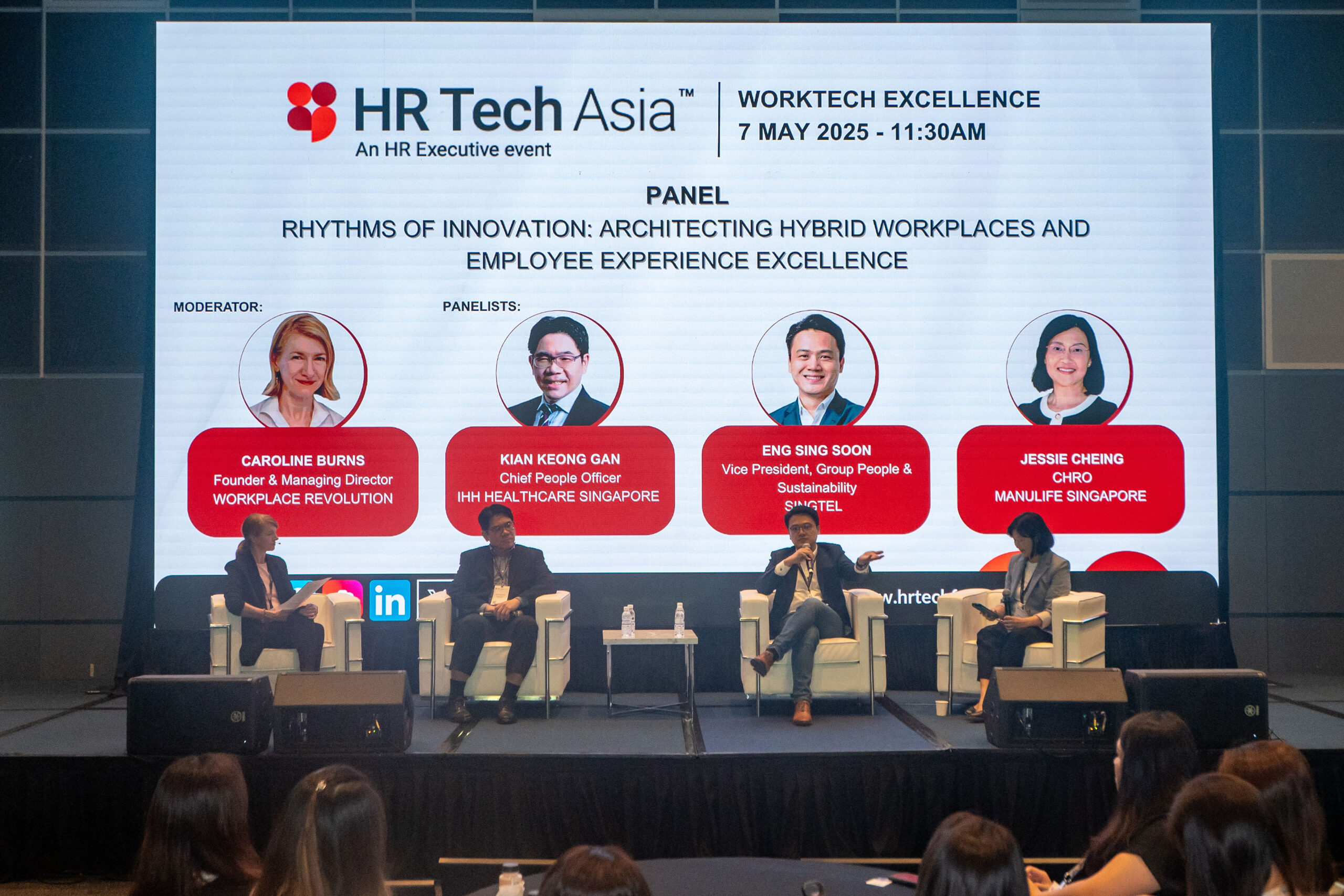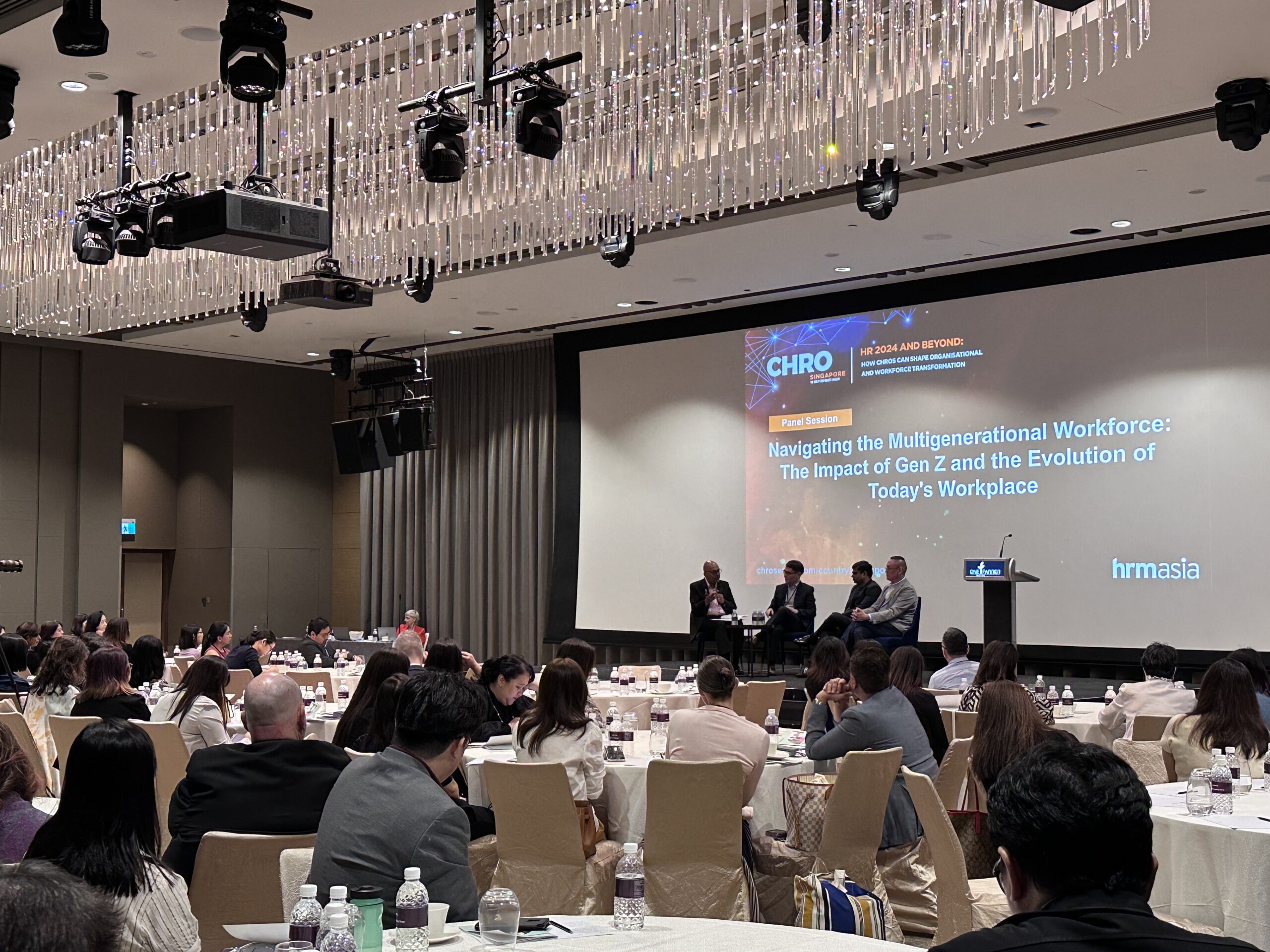Day 2 of HR Tech Asia 2025: Rethinking talent, work, and the human element
- Josephine Tan

As HR Tech Asia 2025 entered its second day, conversations around digital transformation gave way to deeper reflections on the very heart of enterprise success—talent. Headlining the morning keynote, Joydeep Bose, Managing Director and Group CHRO of Olam International, challenged HR leaders to rethink how they build institutional capabilities that give organisations a true competitive edge.
Drawing from a personal story early in his Olam journey, Bose recalled being asked what would make the organisation not just better, but a winner. That question sparked an enduring focus on identifying and cultivating the organisation’s “superpower”—a distinctive, hard-to-replicate capability that drives performance and purpose.
For Olam, a global food and agriculture business with most of its 60,000-strong workforce in non-urban, frontline roles, this superpower is its mission to transform the sector in an ethical, socially responsible, and sustainable way. Bose described how this mission is embedded through entrepreneurial hiring, lean policies that empower employees to act with ownership, and a culture focused on aligning personal purpose with organisational goals.
Succession grows from within, and experiential learning is prioritised over classroom instruction. Ultimately, Bose urged HR leaders to view talent strategy not just as a support function but as a powerful lever to embed agility, leadership, and innovation across the enterprise.
Following Bose’s keynote on creating workplaces that inspire brilliance, the conversation on reimagining work continued with a high-powered discussion. Moderated by Caroline Burns, Founder and Managing Director of Workplace Revolution, the session brought together senior HR leaders to explore how organisations are navigating the evolving dynamics of work, workforce, and workplace, with a focus on employee experience.
Soon Eng Sing, Vice-President, Group People and Sustainability at Singtel, shared how the telco evolved from remote work to a more intentional return-to-office approach—what he called “RTO unreflex”. The real shift, he argued, was not about where people work but why they show up—whether in person or virtually. At the heart of Singtel’s strategy is its BIG culture—Belonging, Impact, and Growth—which reframes employee engagement around purpose and meaning, supported by policies that offer flexibility in terms of place, time, and workload.
Jessie Cheing, CHRO of Manulife Singapore, highlighted the challenge of catering to a five-generation workforce. At Manulife, flexibility is viewed as the “currency” for attracting and retaining talent across generations. Rather than rigid rules, the organisation adopts values-based guidelines under the banner of “Working Better”, empowering employees while staying focused on customer-centricity.
For Gan Kian Keong, Chief People Officer at IHH Healthcare Singapore, hybrid strategies must take into account operational realities. While corporate employees can work remotely, frontline healthcare professionals require on-site presence. To bridge this gap, IHH implemented flexi-time policies and a system that allows employees to request flexible arrangements, creating a more equitable experience across its diverse workforce.
This theme of transformation continued in the following session delivered by Sri Kodali, Senior Director of the People Enablement Centre at ServiceNow. In her presentation, Kodali challenged traditional perceptions of HR as a support function, reframing it as a strategic driver of enterprise-wide transformation. Drawing on ServiceNow’s internal journey, she shared how the organisation has shifted from a shared services model to a centre of excellence—one that actively shapes business direction rather than passively supporting it.
Kodali spoke candidly about the complexity many organisations face today, especially when it comes to employee-facing systems. Citing a Gartner study, she pointed out that the average organisation now has over 80 such systems, creating a fragmented experience that drains productivity, engagement, and operational effectiveness. For an organisation with 10,000 employees, this disjointed landscape can result in an estimated annual productivity loss of US$69 million. But the issue is not just cost—it is also about clarity and connection. Employees are often left unsure of where to go, how to complete basic tasks, or where to seek support. This creates not just inefficiencies but also a sense of disconnection from the organisation’s purpose.
In response, ServiceNow has committed to what it calls a human-centric renaissance. This approach places people at the heart of employee experience, not just by improving usability but by enabling meaningful work. Kodali described how HR roles within the organisation have evolved to be more strategic, with HR vice-presidents and operations leaders taking on expanded responsibilities that influence broader business decisions. At the same time, technology is playing a pivotal role. By fully leveraging the ServiceNow platform—including its AI and GenAI capabilities—the HR team has become its own first customer, piloting innovations internally to enhance workforce experiences before scaling them externally.
“We want to give our people the best life, the best job, and the best purpose—together with the organisation,” she said. “That’s our employee promise.”
One of the most dynamic and thought-provoking sessions of the event was the Industry Debate titled Insourcing versus Outsourcing or Down the Middle. Moderated by global leadership advisor and keynote speaker Nitin Goil, the panel brought together senior HR leaders from Medtronic, Ingram Micro, and Certis Group to examine the complexities of workforce sourcing strategies in today’s rapidly evolving business landscape.
Dr. Jaclyn Lee, CHRO at Certis Group, opened with a candid perspective shaped by years of experience across diverse sectors. She pointed out that Certis, as a major provider of outsourced manpower solutions, sits at a unique intersection in this debate. Against a backdrop of global uncertainty and shifting geopolitical tides, she underscored the need for organisations to continuously reevaluate their operating models.
For Certis, this has meant examining how AI and automation can streamline internal processes and enhance productivity, especially as the organisation undergoes multiple waves of cost-cutting. “We’re looking at how we can stay lean, reduce costs, and explore what can go into shared services,” she said. “AI is going to impact all our work processes, and we need to understand how every employee can become more productive.”
Stephanie Nash, Vice-President of HR for Asia-Pacific at Ingram Micro, echoed this need for reinvention, describing a major internal transformation underway at her organisation. Ingram Micro is overhauling its process architecture while introducing new technology platforms that will redefine its interactions with both internal stakeholders and external partners. Nash shared that this evolution has triggered a reassessment of insourcing and outsourcing arrangements across core business functions—including HR, finance, IT, and procurement.
“We’re navigating many different scenarios,” she said, “to figure out the right sourcing model that aligns with our operational goals and delivers the benefits we need.”
Rodney Pereira, Senior HR Director for Medtronic’s Asia Region Markets, provided a strategic framework for the debate, noting that sourcing decisions must be driven by an organisation’s overarching priorities. If the focus is on employee engagement, experience, and forward-looking HR practices, then the HR function must take the lead. But in cases where cost optimisation, process improvement, or reengineering are the main objectives, operations may be better positioned to drive the change—with HR playing a supportive but still critical role.
He also pointed out that in today’s technology-driven environment, forging strong partnerships with IT is increasingly essential. “Upgrading infrastructure and capabilities demands collaboration,” he said. “While HR is a core part of any sourcing strategy, integrating efforts across HR, operations, and IT often delivers the best outcomes.”
READ MORE: Day 1 of HR Tech Asia 2025: Building tech fluency and inclusive AI for the future of work
Closing HR Tech Asia 2025 with a powerful reminder, Mimi Nicklin, bestselling author and CEO of Empathy Everywhere, urged leaders to look beyond AI and digital innovation to focus on the human connection at work. She highlighted the financial and human cost of disengagement in the workplace. In Asia, a staggering 74% of employees are disengaged, with Singapore alone losing an estimated US$500 million per month due to presenteeism, disengagement, and a lack of motivation.
Despite the widespread investment in HR technologies and AI, she argued that organisations must now prioritise rehumanising work by strengthening social bonds and promoting a culture of belonging.
“We are a species that does well together,” she said. “When we don’t belong, we don’t do well – mentally, physically or professionally. Belonging is not a soft thing. It’s science. It’s evolution.”
Drawing from research and global business data, Nicklin explained that empathetically led organisations see 23% higher profitability, and teams with strong relational bonds demonstrate three times higher engagement.
She stressed that empathy is not about being “nice” or emotional—but about perspective-taking, the ability to recognise and understand how others experience reality. This capability, she said, is trainable and neurologically embedded in all humans, making it a skill set that leaders can develop and scale across their teams.
She also challenged traditional corporate approaches to motivation, pointing out that all motivation is relational, rooted in social ecosystems rather than isolated individual effort. Organisations that overlook the group dynamic, she warned, risk misdiagnosing performance challenges and missing opportunities for collective improvement. “There is no fruit bowl or yoga class in the world that can fix things as quickly as relationships will,” she said.
In a fitting close to the four-day event, Nicklin reminded HR and business leaders that in the face of constant transformation and automation, human connection must remain at the heart of the workplace.
“This isn’t about soft skills,” she concluded. “They’re hard. It’s hard to build, sustain, and has a significant business impact. And in the fourth industrial revolution, empathy might just be your greatest competitive advantage.”
HRM Asia extends its heartfelt thanks to all partners, speakers, and attendees who contributed to the success of HR Tech Asia 2025. Your insights, collaboration, and energy have helped shape meaningful conversations on the future of work and HR transformation.
HR Tech Asia 2025 proudly acknowledges the support of its Platinum Sponsors Oracle and Paradox, along with Gold Sponsors Cornerstone, Rippling, and ServiceNow, and Silver Sponsors Dayforce and the Tripartite Alliance for Fair and Progressive Employment Practices (TAFEP).
We look forward to welcoming you to HR Tech Asia 2026, taking place from May 5 to 6 at Suntec Singapore.






